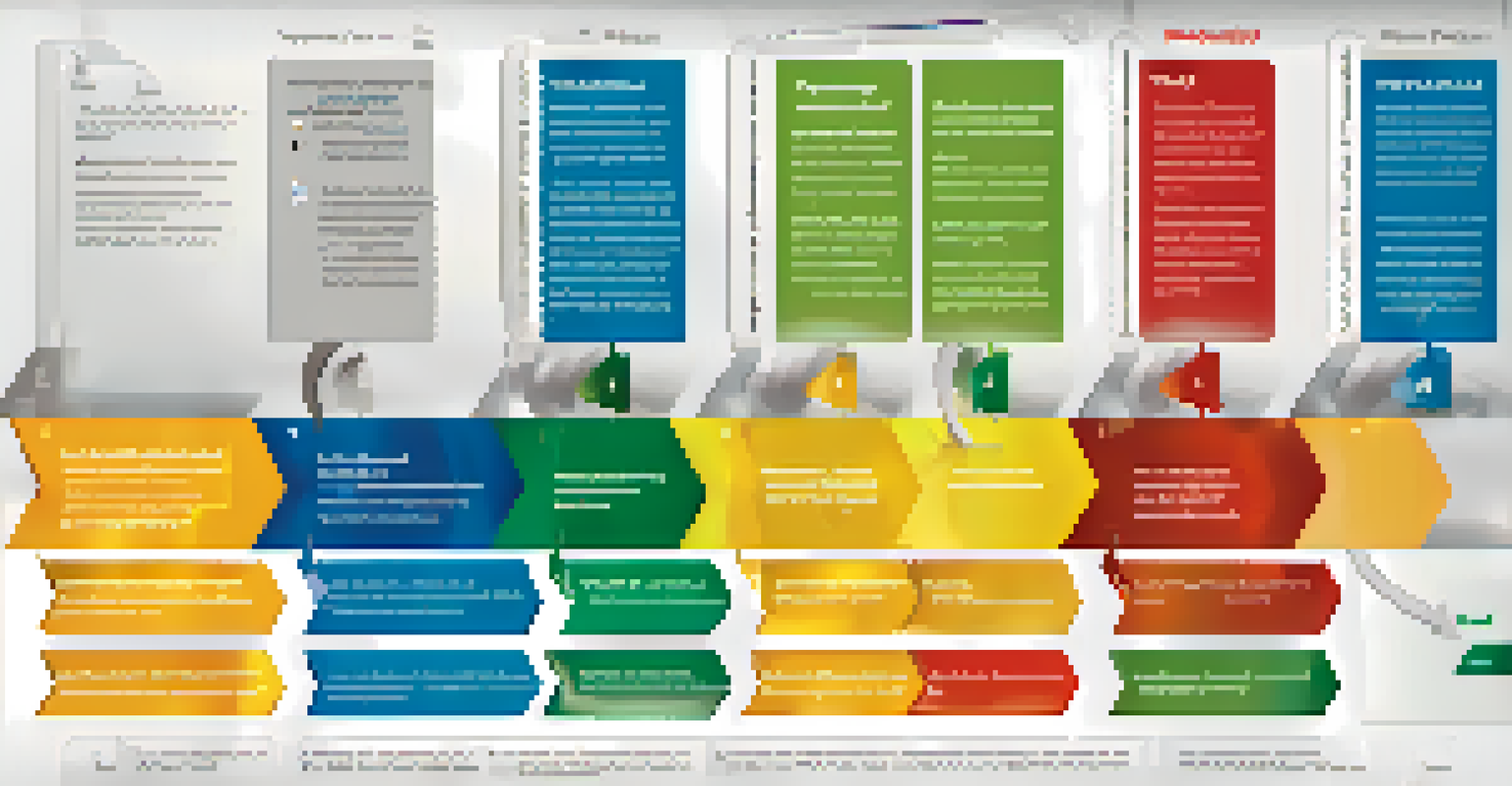Analyzing Clinical Trial Results: Interpreting the Data Correctly

Understanding Clinical Trials and Their Importance
Clinical trials are essential for determining the safety and efficacy of new treatments. They serve as the backbone of medical advancements, allowing researchers to test hypotheses and gather crucial data. By participating in these trials, patients contribute to a greater understanding of diseases and potential therapies.
Clinical trials are the cornerstone of evidence-based medicine.
These trials typically progress through several phases, each designed to answer specific questions about a treatment's effects. Phase I focuses on safety, Phase II on efficacy, and Phase III compares the new treatment against standard therapies. Understanding these phases is key to interpreting the results accurately.
Ultimately, the outcomes of clinical trials can influence guidelines and standards of care across the medical field. Thus, grasping the significance of these trials not only aids researchers but also empowers patients to make informed health decisions.
Key Terminology in Clinical Trials
Familiarity with clinical trial terminology can greatly enhance your understanding of study results. Terms like 'placebo,' 'control group,' and 'randomization' might sound complex, but they’re crucial for interpreting data. A placebo, for instance, is an inactive substance that helps ascertain the true effects of a treatment.

Randomization ensures that participants are assigned to different groups by chance, reducing bias in results. This process increases the reliability of findings, making it easier to draw conclusions about the treatment's effectiveness. Understanding these terms helps demystify the data presented.
Importance of Clinical Trials
Clinical trials are crucial for assessing the safety and effectiveness of new treatments, shaping future medical practices.
Incorporating this vocabulary into your analysis allows for more nuanced discussions about the trials. When you know what these terms mean, you can critically evaluate the strengths and weaknesses of the study.
Reading and Understanding Study Results
When examining clinical trial results, it’s vital to look beyond the surface numbers. The results often include various statistics, such as p-values and confidence intervals, which indicate the reliability and significance of the findings. A p-value less than 0.05 often suggests that results are statistically significant.
In the end, clinical trials are about patients and about improving their lives.
Confidence intervals provide a range within which the true effect likely falls, giving depth to statistical claims. For example, if a trial reports a confidence interval of 95%, it implies that if the study were repeated many times, 95% of those results would fall within this range. This is key to understanding the data's implications.
Moreover, consider the clinical relevance of the results, not just the statistical significance. A treatment may show statistical success but have minimal real-world benefits, so always ask how the findings translate to patient care.
Evaluating Bias and Limitations in Trials
Every clinical trial has its limitations, and recognizing these is vital for accurate interpretation. Bias can occur at various stages, from participant selection to data reporting, potentially skewing the results. For instance, if a trial only includes a specific demographic, its findings may not be applicable to a broader population.
Critically evaluating the study design is essential to identify potential biases. Look for factors like funding sources, which could influence outcomes, and assess whether the researchers disclosed any conflicts of interest. A transparent study is more likely to yield trustworthy results.
Understanding Study Results
Interpreting clinical trial results requires looking beyond statistics to grasp their real-world implications for patient care.
Understanding these limitations allows you to weigh the findings appropriately. Acknowledging potential biases doesn't diminish the importance of the trial but provides context for interpreting its conclusions.
The Role of Peer Review in Clinical Research
Peer review is a critical process in validating clinical trial findings. Before results are published in scientific journals, they undergo scrutiny by independent experts in the field. This process helps ensure the research meets rigorous standards for quality and reliability.
While peer review isn’t foolproof, it significantly enhances the credibility of published studies. It acts as a safeguard against flawed research making its way into the medical community. Understanding this process helps readers appreciate the value of peer-reviewed data.
However, even peer-reviewed studies can have flaws, so it’s always wise to consider multiple sources and viewpoints when analyzing results. Relying on a single study may lead to skewed perspectives, so broadening the scope of research is beneficial.
Applying Findings to Patient Care
Interpreting clinical trial results is not just an academic exercise; it has real-world implications for patient care. Once results are published, healthcare professionals must translate this data into actionable treatment plans. This process involves considering how the findings align with individual patient needs and circumstances.
For example, a trial may show a new drug’s effectiveness in a specific age group, but if you're treating a patient outside that demographic, the results might not apply. This is why clinicians must balance trial findings with their expertise and the unique aspects of each patient.
Recognizing Bias and Limitations
Identifying potential biases and limitations in clinical trials is essential for accurately interpreting their findings and relevance.
Furthermore, patients themselves can benefit from understanding trial results. Being informed empowers them to engage in discussions about their treatment options, making it easier to navigate healthcare decisions.
Future Directions in Clinical Trial Research
The landscape of clinical trial research is continually evolving, with new methodologies and technologies shaping how studies are conducted. Innovations like adaptive trial designs allow researchers to modify trials in real-time based on interim results. This flexibility can lead to quicker, more relevant findings.
Additionally, the integration of real-world evidence and patient-reported outcomes is becoming increasingly important. Collecting data outside of controlled environments helps ensure that results are applicable to everyday clinical practice. This trend is reshaping how we view the effectiveness of treatments.

As we look to the future, embracing these advancements will enhance our ability to interpret clinical trial results accurately and apply them to improve patient care. Staying informed about these changes is vital for healthcare professionals and patients alike.